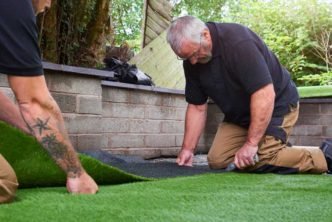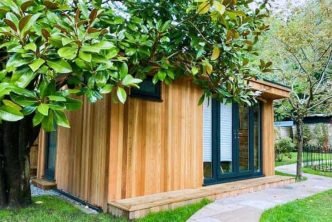Having a green home saves you money immediately and long term. The average green home gets appraised at a much higher price than regular homes.
But the best part about having a green home is the positive environmental impact you’ll provide for the planet.
By implementing the following five tips, you’ll see a fantastic return-on-investment (ROI) on your new sustainable home.
Table of Contents
Go Solar
Solar panels emit zero emissions, which is a substantial positive impact on the environment. By switching your home to solar energy, you’re saving an average of $10,000 to $30,000 during the lifetime of your home. Some states even provide tax incentives if you go solar.
If you’re worried about the lack of sunlight in your area, don’t be. You’ll have a backup source of energy on particularly cloudy weeks. Plus, solar panel installation is easy and cost-effective. You’ll see an immediate difference in your utility bill after installation.
Grow a Home Garden
Growing your own food is a rewarding experience that helps the environment. Traditional grocery store fruits and vegetables make a big carbon footprint, so the more you rely on your own food, the more you’ll help the environment.
Beyond the sustainability of growing your own food, you’re also helping to curb CO2 emissions by having a thriving garden. Plants release oxygen into the air and provide habitats for insects and animals. Planting trees help cut cooling costs even further by providing shade.

Reduce, Reuse, and Recycle
Taking steps to reduce your carbon foot relies on how well you reuse or recycle items that can’t decompose. Plastics, glass, and paper should never make their way into a trash can.
Adding a recycling bin into your home and teaching the family how to reuse certain items will significantly impact the environment. Talk to your neighbors and see if you can convince your entire neighborhood to follow your lead.
Create a Compost Bin
Compost bins help the environment, as well as your home garden. Composting provides healthy nutrients for your garden and reduces methane emissions at landfills.
Composting is easy to get into. All you need is a composting pile filled with water, browns, and greens, like twigs, leaves, and fruit scraps. This pile breaks down scraps like eggshells and fruits.
Once your compost pile receives enough scraps, you may distribute it among your home garden to provide it essential nutrients. The compost pile also helps prevent plant diseases and deter pests from your garden.
Get Energy-Efficient Appliances
Energy-efficient appliances are labeled as such because they use much less energy than regular appliances. By purchasing and installing these appliances into your home, you’ll see a positive difference in your utility bill while helping the environment. When it comes to bathroom fixtures, old toilets can use 3.5 to 7 gallons per flush. A water-efficient toilet only uses about 1 to 1.28 gallons per flush. If your old toilet isn’t working properly anymore, consider upgrading to a low-flush saniflo toilet.
If you can’t invest in energy-efficient appliances right away, you can still take steps towards efficiency. For example, wash your clothing in cold water only and try to limit dishwasher use if your dishes can get hand-washed instead.
Get a Green Home With Ease
Getting a green home isn’t as hard as it seems. By implementing these five tips, your home will become greener than ever.
If you love gardening, check out the rest of our posts. We write about the outdoors, home gardening tips, and more.





